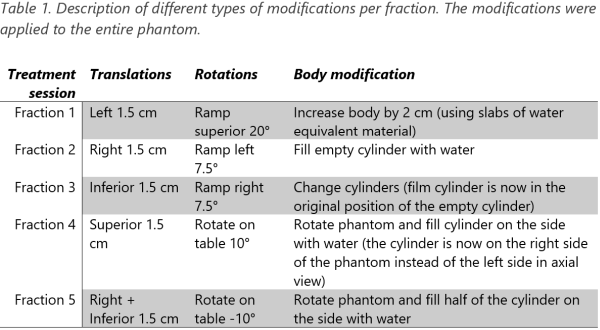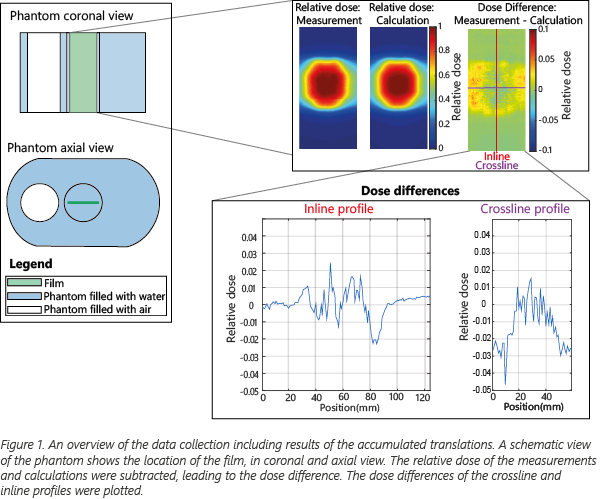Experimental verification of accumulated dose of multifraction plan adaptations on the MR-linac
Madelon van den Dobbelsteen,
The Netherlands
PD-0751
Abstract
Experimental verification of accumulated dose of multifraction plan adaptations on the MR-linac
Authors: Madelon van den Dobbelsteen1, Sara Hackett1, Bram van Asselen1, Stijn Oolbekkink1, Jochem Wolthaus1, Wilfred de Vries1, Bas Raaymakers1
1UMC Utrecht, Radiotherapy, Utrecht, The Netherlands
Show Affiliations
Hide Affiliations
Purpose or Objective
During a MR-linac treatment, every fraction is planned and delivered on the daily patient anatomy. Currently, plan quality assurance of a MR-linac treatment focuses on verifying individual fractions instead of verifying series of adapted fractions. The goal of this research is to determine the accuracy of experimental accumulated doses of multifraction plan adaptations on the Unity MR-linac. To verify the total dose of a series of adapted plans, a phantom was modified during each fraction and multiple adapted plans were generated and irradiated.
Material and Methods
Three modifications to the phantom were considered: translations, rotations and body modifications. For each modification a five fraction MR-linac treatment was planned and delivered. Measurements were performed on the QUASAR™ MRI⁴ᴰ Motion Phantom (Modus Medical Devices Inc., Canada), comprising an external body and two internal cylinders. One cylinder in the middle of the phantom contains a film insert with Gafchromic EBT3 film (Ashland Inc., USA) and the other (empty) cylinder on the side of the phantom represents the lung. A schematic view of the phantom is illustrated in Figure 1. The measured dose over the accumulated treatment was compared to the calculated dose. For each fraction the geometry of the phantom was modified, as shown in Table 1.

The new phantom position was imaged using the daily MR-scans and the plan was generated on the modified phantom using the adapt to shape procedure. This process was repeated for five fractions, while leaving the film in the phantom, leading to the accumulated measured dose on the film. Single fractions were also measured and calculated for comparison. Calculations were performed using the treatment planning system Monaco (v5.51.10). A 2D plane matching the film was extracted from the 3D dose grid. The relative dose of the measurements and calculations were compared.
Results
The single and accumulated fractions show good agreement for measured and calculated dose distributions and dose profiles. The dose distributions and differences of the dose profiles of the accumulated translation are illustrated in Figure 1.

The measurements and calculations were compared using a γ criteria of 2%/2mm. Threshold doses of 10% and 90% of the maximum dose were used. The original plan, accumulated translations, accumulated rotations and accumulated body modifications had a γ passing rate of 99.8%, 99.7%, 99.2%, 99.3% for 10% threshold dose and 99.6%, 99.4%, 95.5%, 99.2% for 90% threshold dose. The single fractions showed similar results, with γ passing rates ranging from 97.3% to 99.9% for all threshold doses. Except for one single fraction, with a γ passing rate of 93.9% and 83.0% for threshold doses of 10% and 90%.
Conclusion
The accumulated measurements and calculations show a good agreement for the dose distributions, dose profiles and γ passing rates. The multifraction treatments show similar dose differences and γ passing rates compared to single fraction treatments.